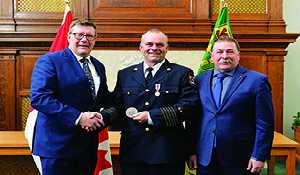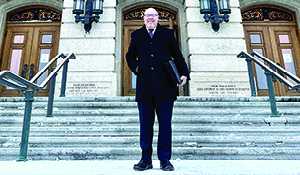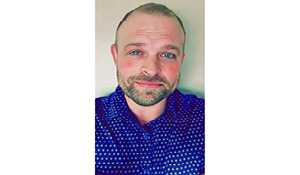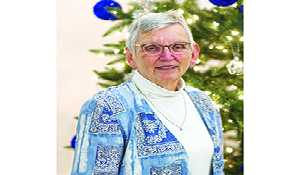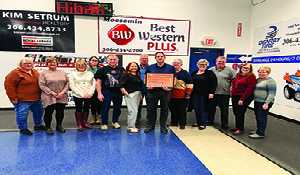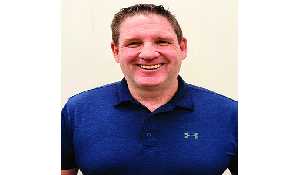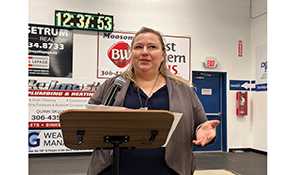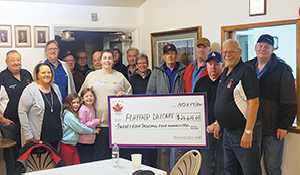Tipi built at École Saint-Lazare
November 26, 2021, 3:27 pm
Sierra D'Souza Butts, Local Journalism Initiative Reporter
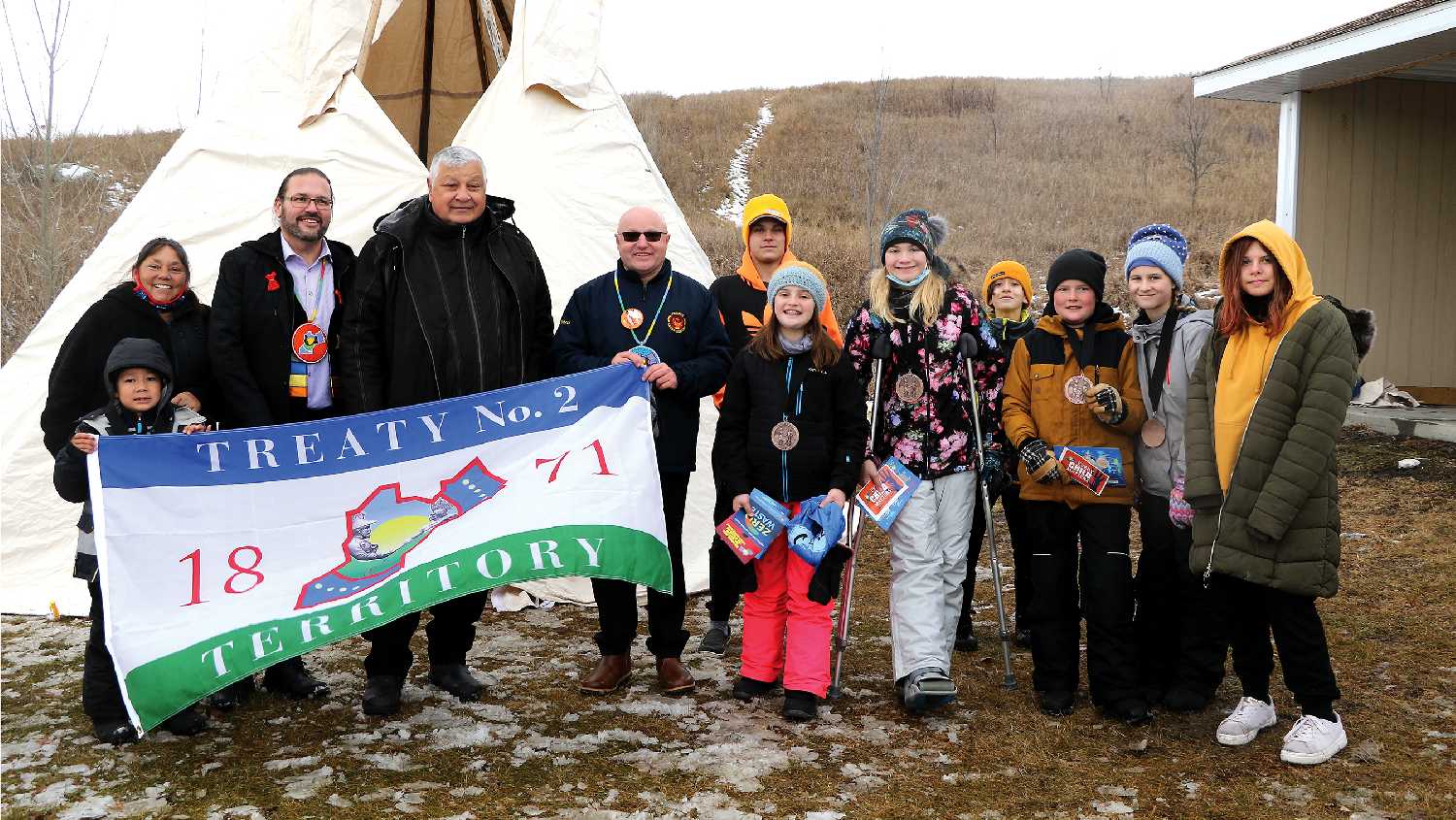

On Tuesday, citizens from the Métis community and First Nations communities gathered at École Saint-Lazare in Manitoba, to celebrate the installation of a tipi being built at the school.
The Division scolaire franco-manitobaine (DSFM) plans on placing a tipi at each of the elementary schools that offer its pre-kindergarten program, as part of its Truth and Reconcilation program to encourage children to learn about First Nations cultures.
The principal of École Saint-Lazare, Richard Fiola, said there are about five francophone schools in the province of Manitoba that offer pre-kindergarten classes.
“Our school board DSFM, offers a pre-kindergarten class in schools that do not have a daycare. We are integrating young children as early as four years old to learn French and participate in our culture. During Covid, we have chosen to release quite a few projects outside. The tipi is to add a new area to do outdoor teaching.”
École Saint-Lazare is the second DSFM school in Manitoba to have the tipi installed. The first placement was at École Jour de Plaines in Laurier, which took place on National Day of Truth and Reconciliation, Sept. 30.
“The people from the Truth and Reconcilation program organized this to happen, so there’s four or five schools in the province planned to have tipi installments. We are the only one in the West part of the province that have pre-kindergarten. Part of that program included having classes outside, so they had given every school that had that pre-kindergarten program a tipi to be set up outside.”
He says the program focuses on educating children at a young age about the cultures and history of First Nations, as opposed to introducing the subject to students at the high school level.
“I think that younger kids don’t have any apprehension, so learning languages and learning different things, they are like a sponge. I believe that if we give them the base on the respect, and on the reconciliation aspect of the history that we are trying to write again, that should be good for the next generation so that they will better understand the errors and write a new page for our relations between the First Nations and citizens and Métis community.”
Fiola said the tipi project happened at the request of the federal government, which asked localities to take action to build positive relations with First Nations around their Métis community.
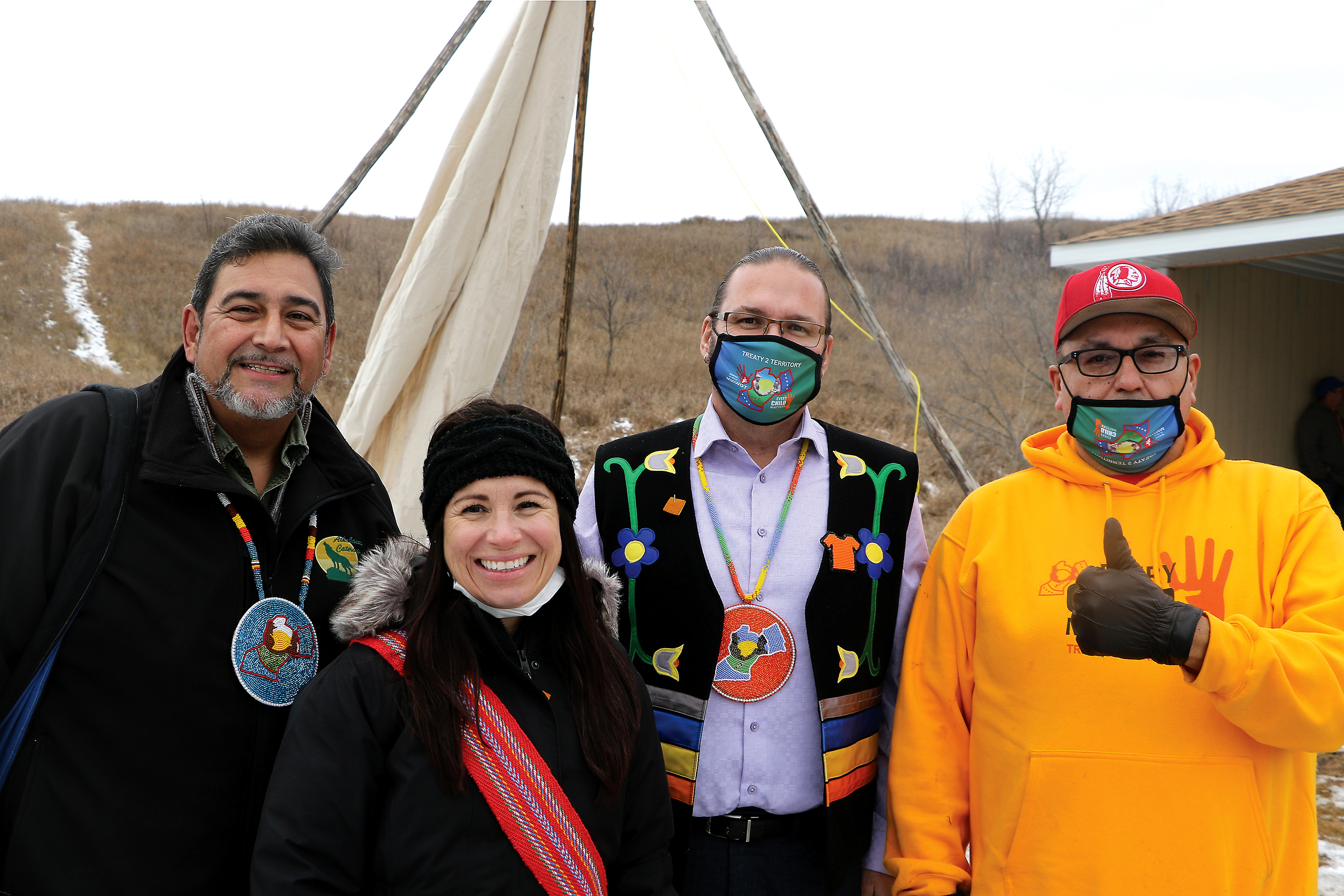

At the ceremony, Fiola said the following:
“I am happy to have you here this afternoon for the installation of the tipi on the grounds of the St-Lazare school. For centuries people have passed through Fort Ellice to cross Canada. From their first travels, First Nations, Métis and travelers stopped here to rest, trade in furs and pemmican, or repair their canoe or carts. This tipi can be found a few steps away from the crossroads of the Assiniboine and Qu’Appelle rivers.”
“As those rivers meet here, we want this space to be a meeting place between generations and between our peoples. This tipi will be a testimony that we want to recognize the presence of First Nations long before the arrival of the Europeans. Our tipi will give us a meeting place to share, to reflect and to recognize ourselves and share the richness of our respective cultures.”
“Our gathering is intended as a response to the actions requested by the Truth and Reconciliation report. As part of an educational process, we recognize that there are other steps to be taken in the future. I hope that our students, staff and the people in the community will be able to take the initial steps so that our footsteps meet and our paths cross. We cannot change the past, but we can write the pages of the centuries to come. I trust that this meeting will mark a starting point in the recognition of our peoples and the beginning of sharing our cultures.”
Fiola said it’s important to have the tipi placed at the school because it allows children to learn about the culture of First Nations and be educated on the land they are on.
“Since we are on Treaty 2, and Treaty 4 was signed here on St-Lazare and Fort Ellice, I think it’s important for the kids, our Métis kids and even for some of our European origin kids, to get to know the culture and the people that were here long before us.”
“I think the cultural part is what we want teachers and students to gain from this. We want to provide a space that the kids will have a place to retrospect and have writing sessions outside, reflections outside and activities like that,” Fiola said.
“In the long run, writing, doing their homework, singing, art classes, any activity really. We’ll be doing more of cultural teachings always with a First Nation present.”
The activities the school has planned to further educate its students on the different cultures of First Nations include the music, the dances, culinary and the history. He said it will be led by the teachers and First Nations people from communities of Gambler, Waywayseecappo, Tootinaowazibeeng, Rolling River, Sakimay and Pine Creek.
“We already have a course planned for grade nine and grade ten students that focus on First Nations studies but we want to enrich it. We hope eventually there will be a curriculum at the high school and elementary level.”
“We hope to be proud of our origins, as we are a little Métis community here but we want to also recognize the First Nations that are our neighbors. We want good relations, we want to acknowledge that we recognize errors of the history but we want to write the pages for the next century on a good basis.”
In addition to the installation of the tipi, the community honored Louis Riel to acknowledge the 136 years since his passing.
“Today is an important and sad day in the history of the Founder of the province of Manitoba, Mr. Louis Riel. This Canadian politician was the leader of the Métis people on the Canadian Prairies. He led three resistance movements against the Canadian government in an effort to protect Métis rights and culture, as Canadian influence grew in the Northwest Territories. After several requests for a new trial to take place and for an appeal to Queen’s Privy Council for Canada to be rejected, Riel was hung for treason on November 16, 1885. Let us take a minute of silence to remember this sad event in our history because it is 136 years since Louis Riel died.”
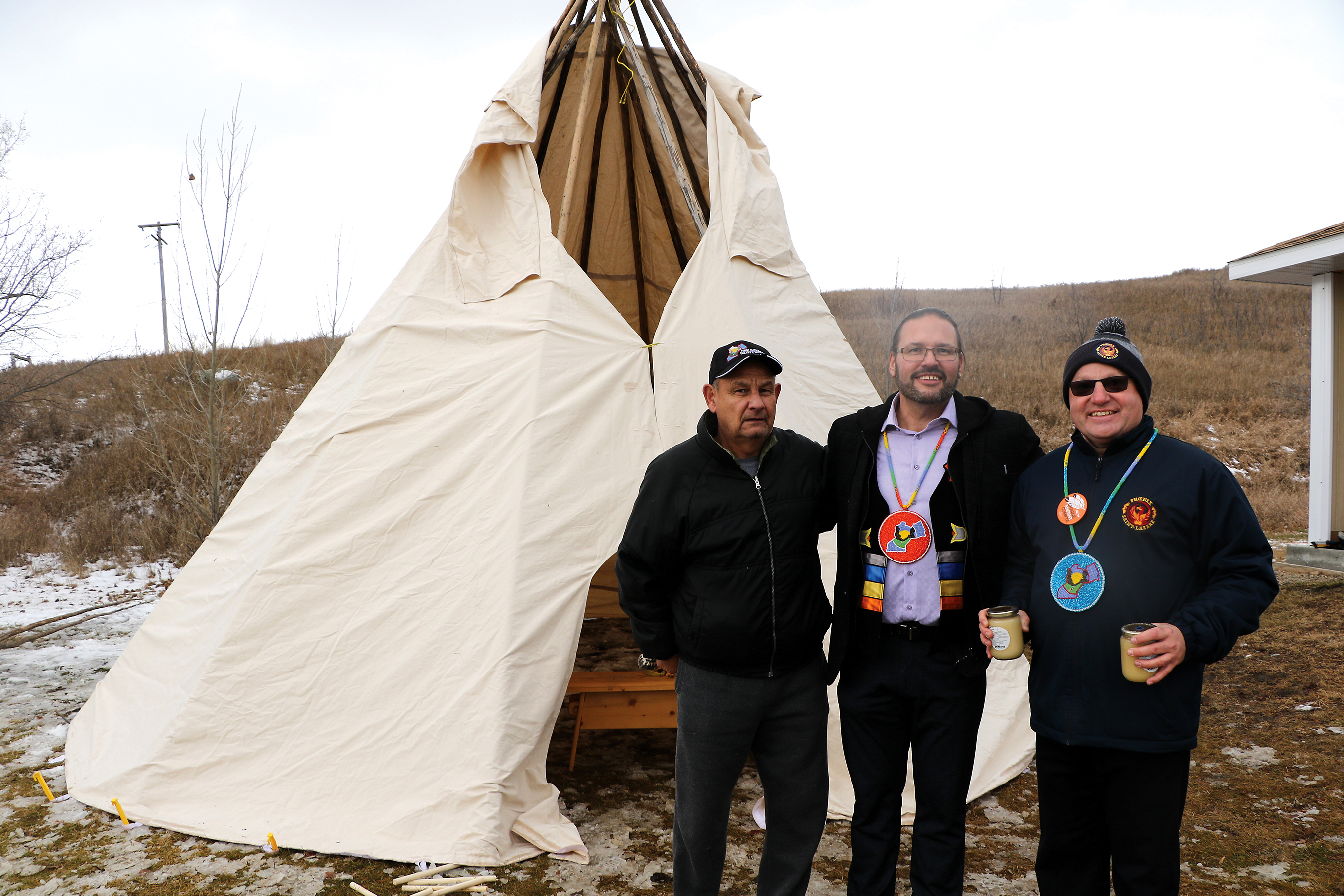

Significance of the tipi ceremony
As the tipi was built from the crossroads of the Assiniboine and Qu’Appelle rivers, Boh Kubrovich Lead Keeper of Treaty 2 territory, talked about the significance of its placement at École Saint-Lazare.
“Fort Ellice for many years was a trading post but also an area for our Anishinaabe, Cree, Dakota and Nakota Nations peoples. This is a huge moment for us because we are able to transfer the knowledge we have, and the resources and research that we have, to the younger children today. It’s good for us as a territorial government to showcase after 150 years that we are here. That we are still here. This is a great moment for us.”
“The Gambler Nation is a very important nation to us, why because the day before treaty, as the sovereign Anishinaabe people, the Gambler would go everywhere all over the territory to tell all their relatives and everyone who would listen ‘don’t sign the treaty, don’t make the treaty’ and 150 years later our Treaty still hasn’t been honored or identified in the process of Canada,” he says.
“So what we have done now as a sovereign government is very exciting, we have built Canada for the lands but we’re also making sure that we can have reconcilaction. We put that ‘c’ in there and we’re doing as much action as we can. We want to build hockey arena’s, we want to have wellness and well-being centres in our names. We want to embrace our relatives and our nations, for our Anishinaabe people.”
Lead Keeper Kubrovich, gave each student at the school a replica medallion that shows the handshaking relations between the Crown and the First Nations Treaty 2, on August 21, 1871.
“We’re honoring the handshake because we are telling Canada that in our area and in our flag we don’t have a hatchet. We have what is considered our first constitution, what is our first lodge.”
Allen Sutherland Skownan First Nation Treaty 2, spoke about the meaning the tipi has to Treaty 2 territory.
“My English name is Allen Sutherland Skownan, but my real name is Waabski Minazoot Michtaatim which means white spotted horse. A tipi is one of the shelters, it’s our travel home. There are many kinds of shelters that help us get away from the elements of the cold. This tipi is one of many.”
Skownan said the location the tipi was placed at, exemplifies the history of how First Nations were treated but also demonstrates a new beginning of relations.
“We had a long relationship with newcomers from the other side of the world. We started off our relationship with peace and friendship, with the idea of can we live with you so we said there’s plenty of room on mother earth.
“We became neighbors and as good neighbors should be, we always looked after each other. And that’s been the history of eventually calling our place Canada.”
“Indigenous people played a central role to create the foundation and building of this country. As friends, allies and neighbors. But what we are celebrating here today is that history took a wrong turn, we weren’t included after to build up that nation. We were generous in the first place to share our treaty, like Fort Ellice and many other nations but somewhere along the line people forgot about treaties.”
“Yet, treaties is a blood relationship. As long as we call ourselves Canadians we are all treaty people and right now you are on Treaty 2 territory. This is a very important thing to understand the generosity of sharing our place. We want to control our own destiny. But what we are looking forward to is that when I’m going to be introducing myself as Anishinaabe Saulteaux Canadian, and then the work is complete.” Tweet
